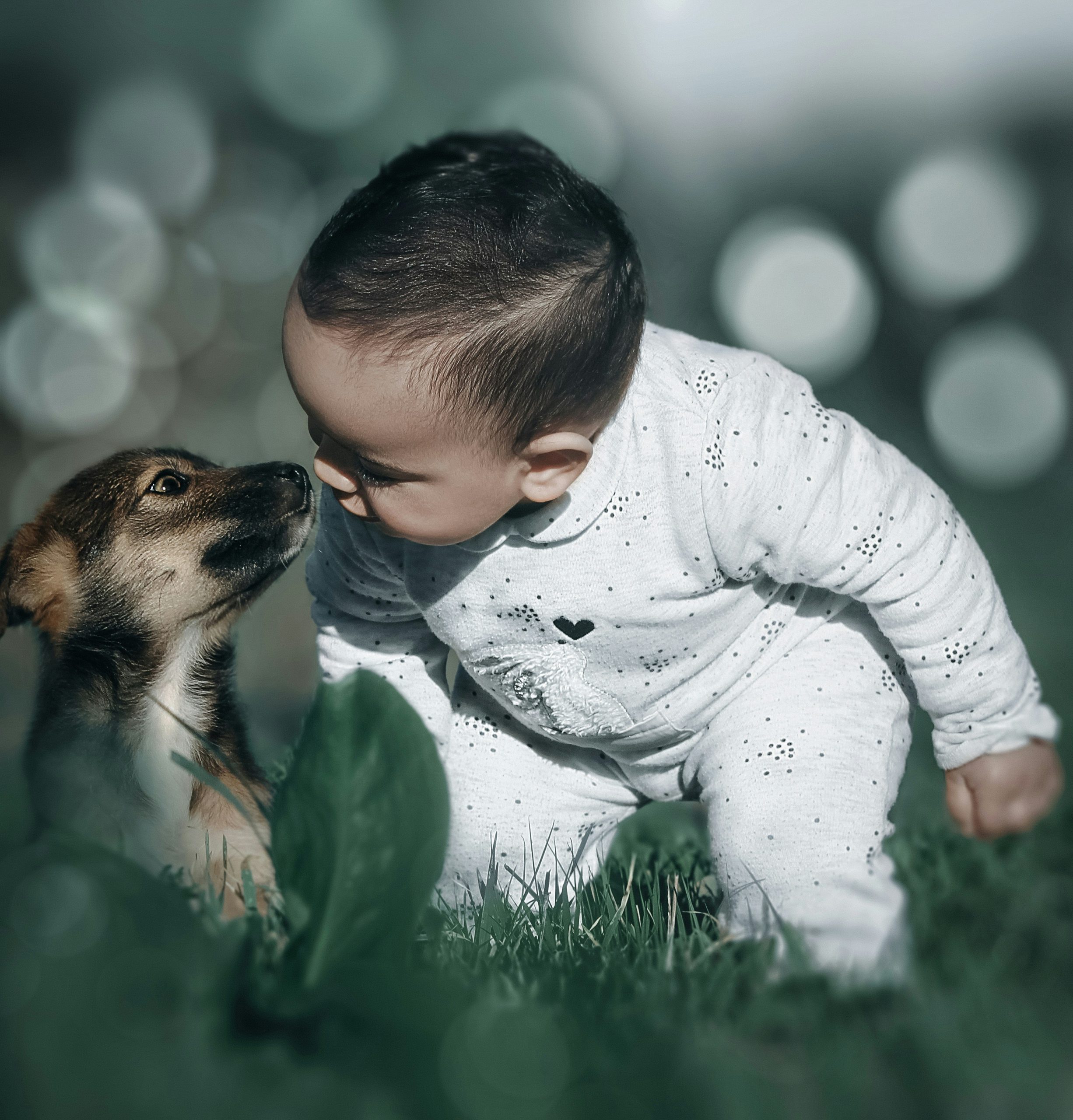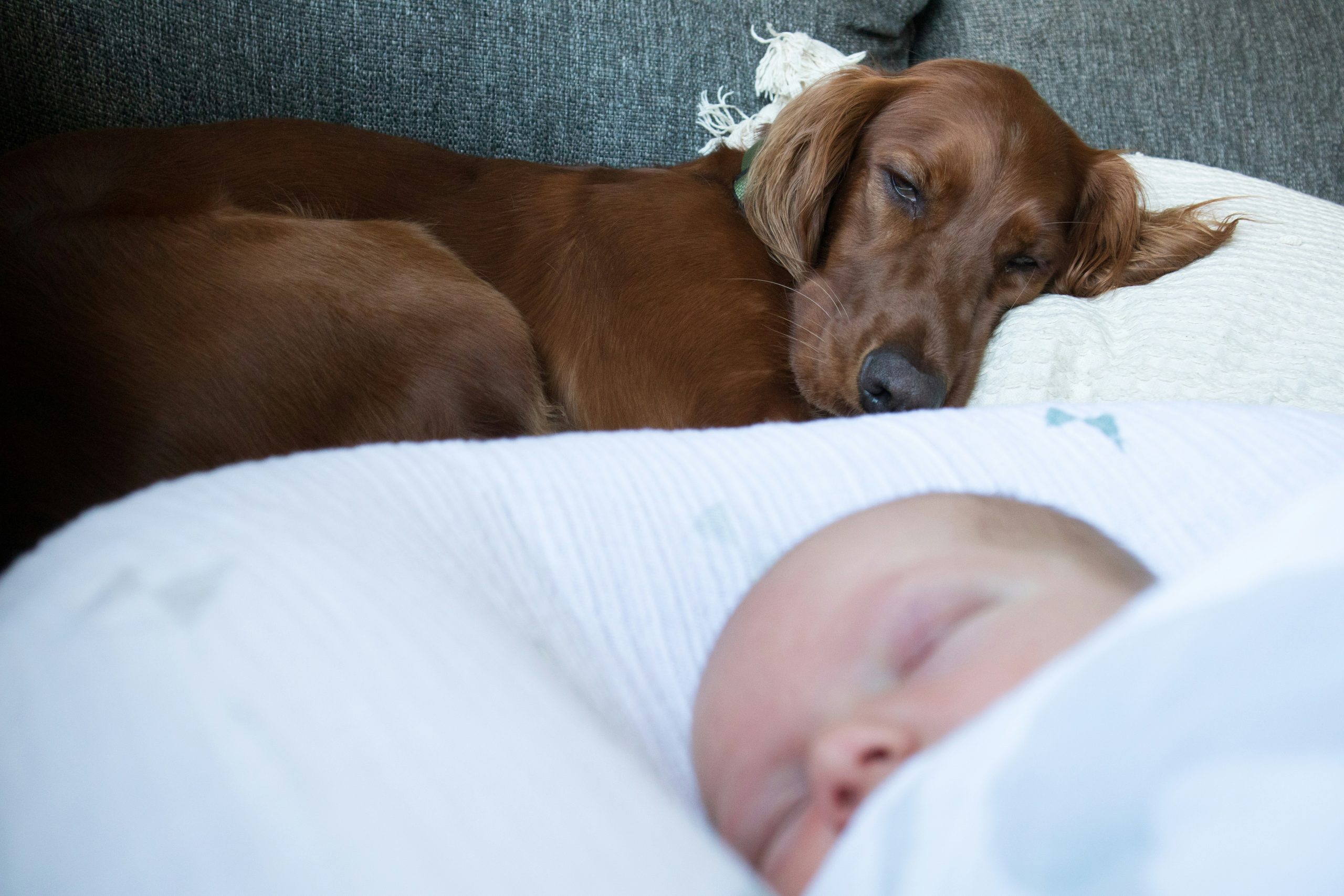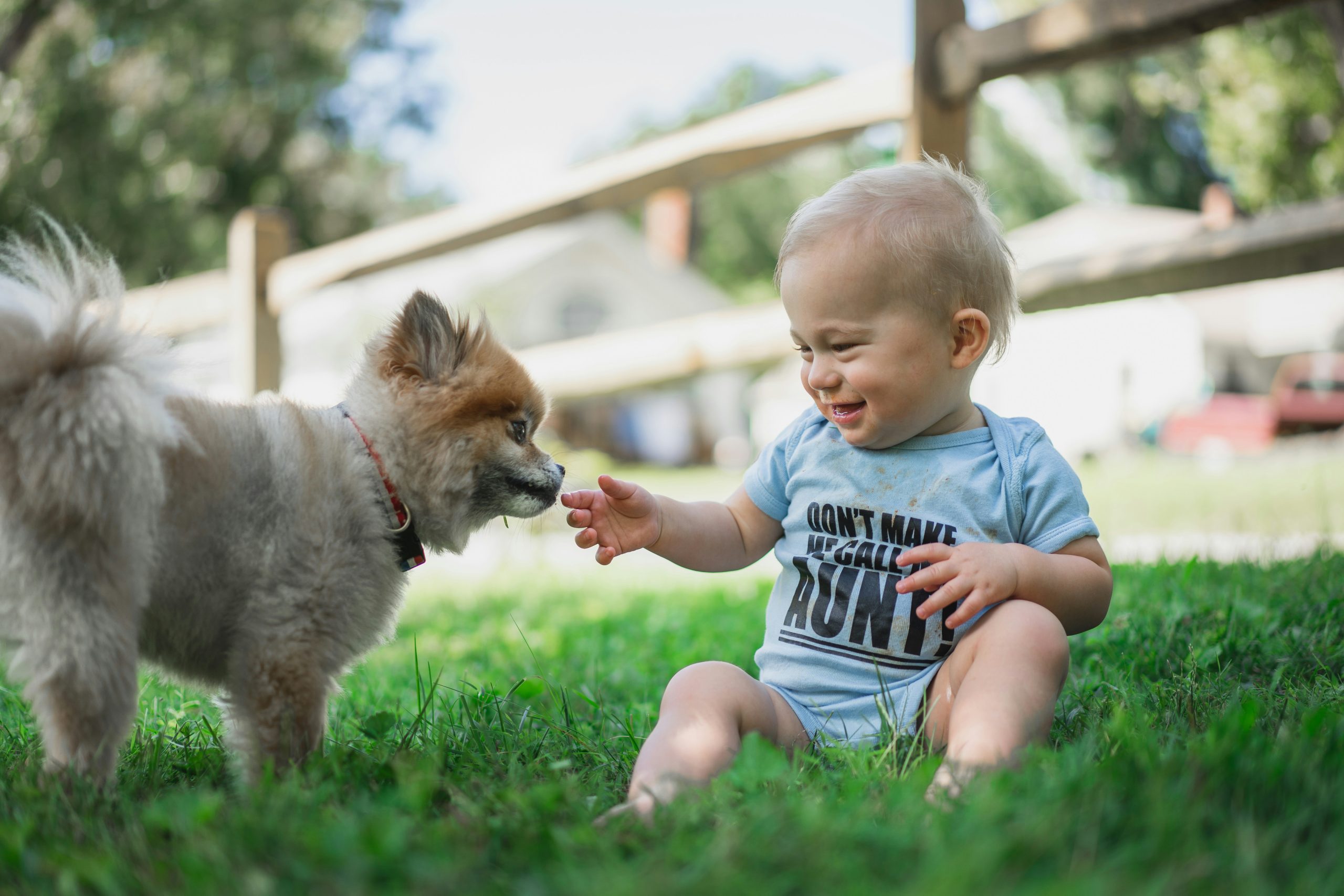Introducing Dogs to Babies: Building Bonds for a Lifetime
Introducing Dogs and Babies: A comprehensive guide on how to introduce dogs to babies, including gradual introduction techniques, preparing the dog beforehand, supervision and safety measures, signs of stress or aggression in dogs, training and socialization tips, making the first introduction, and daily life with dogs and babies.
Introduction to Introducing Dogs and Babies
Introducing a dog to a new baby is a joyful but crucial step that demands thoughtful preparation to guarantee a harmonious transition for everyone involved. Taking into account that dogs are creatures of routine, it is vital to introduce changes gradually to help them adapt to the upcoming addition of a baby. For instance, during the second trimester of pregnancy, it is recommended to practice daily life at home with both the dog and a baby in mind, gradually familiarizing the dog with the imminent changes in the household.
Moreover, the successful integration of a dog and a baby can set the foundation for a lasting and affectionate relationship between the two, providing numerous benefits for the baby’s development and the dog’s well-being. By prioritizing structured interactions, positive reinforcement, and consistent routines, families can establish a safe and loving environment where both the dog and the baby can thrive. An example of this would be engaging the dog in activities that involve the baby, such as supervised playtime, to encourage bonding and create positive associations between the dog and the new family member.
The Importance of Gradual Introduction
The significance of a gradual introduction between dogs and babies cannot be overstated. It offers dogs the opportunity to adapt to the new family member in a comfortable manner, reducing stress and minimizing potential conflicts. For instance, allowing a dog to explore the baby’s nursery under supervision before the baby arrives can help the dog become familiar with the new scents and environment, facilitating a smoother transition. By gradually increasing exposure, such as letting the dog observe the baby from a distance and rewarding calm behavior, the dog can feel more at ease and curious rather than anxious or threatened.
Moreover, the process of gradual introduction is not only beneficial for the dog but also for the baby’s safety and well-being. By introducing the dog to the baby in controlled, positive interactions, parents can observe the dog’s behavior and body language to ensure a safe environment for both the dog and the baby. Additionally, gradual exposure helps build trust and familiarity between the dog and the baby over time, establishing a foundation for a harmonious relationship based on mutual respect and understanding. An example of this could be starting with short, supervised visits where the dog is rewarded for calm behavior, gradually increasing the duration of interactions as the dog becomes more comfortable with the baby’s presence.
Preparing Your Dog Before the Baby Arrives
When preparing your dog for the arrival of a new baby, it is crucial to expose them to various baby-related stimuli early on. You can achieve this by playing recordings of baby noises, using baby lotions or powders, and allowing your dog to investigate baby items such as cribs, strollers, and toys. By doing so, your dog can gradually acclimate to these new scents and sounds, reducing the likelihood of them being overwhelmed when the baby arrives.
Setting ground rules and boundaries is another essential step in preparing your dog for the new family member. It’s important to establish areas in the house that will be off-limits to the dog once the baby arrives. This could include the nursery or specific rooms where the baby will spend most of their time. By introducing these boundaries early, your dog can start adjusting to the new rules and expectations, creating a smoother transition when the baby comes home.
Moreover, maintaining your dog’s regular exercise routine and mental stimulation during pregnancy is vital for their well-being. Engaging in physical activities like walks, playtime, and training sessions not only helps keep your dog physically fit but also provides mental enrichment. A well-exercised and mentally stimulated dog is less likely to exhibit destructive behaviors out of boredom or frustration, ensuring a harmonious environment for both the dog and the new baby.
Signs of Stress or Aggression in Dogs
Recognizing signs of stress or aggression in dogs is crucial when introducing them to a new baby. Apart from the common indicators like panting, pacing, yawning, and shedding excessively, dogs may also display subtle cues such as lip licking, avoiding eye contact, or ears pinned back when feeling uneasy in a situation. It’s essential for pet parents to be observant and responsive to these signals to prevent any potential conflicts or stress during interactions with the baby.
Moreover, aggressive behaviors like growling, snapping, or showing raised hackles can be alarming and require immediate attention. In such cases, positive reinforcement training methods can be effective in redirecting these behaviors and promoting a positive association with the baby. For instance, if a dog growls when the baby approaches their food bowl, the owner can use positive reinforcement by rewarding the dog for calm behavior around the baby while keeping the feeding area a safe zone. This approach helps the dog understand that good behavior is rewarded, creating a harmonious environment for both the dog and the baby.
If a dog consistently exhibits signs of stress or aggression toward the baby, seeking guidance from a professional dog trainer or behaviorist is highly recommended. These experts can provide tailored strategies to address the underlying causes of the behavior and help the dog adjust positively to the new family dynamics. By understanding and addressing these signs promptly, pet parents can ensure a safe and peaceful introduction between their dog and the new baby, laying the foundation for a strong and loving relationship to flourish.
Training and Socialization for Dogs
When preparing a dog for the arrival of a new baby, basic obedience training is crucial in ensuring a safe and harmonious environment. Commands such as “sit,” “stay,” and “leave it” are valuable in managing the dog’s behavior around the baby and responding promptly to cues. For example, teaching a dog to “stay” can be beneficial during moments when the baby needs the primary focus, allowing the dog to remain calm and in place.
Moreover, socializing dogs with children and infants in a controlled setting can help them become more comfortable and confident around young family members. Through positive interactions and supervised play, dogs can learn appropriate behaviors and boundaries when engaging with babies. For instance, exposing a dog to the sights and sounds of a baby in a controlled environment can help desensitize them to new stimuli, reducing the likelihood of stress or anxiety when the baby arrives.
Additionally, enrolling a dog in puppy classes or obedience training programs that emphasize positive reinforcement is beneficial for enhancing their social skills and responsiveness to commands. These programs not only provide structured training but also create opportunities for dogs to interact with other puppies and people, further developing their socialization skills. By fostering a positive learning environment, dogs can build confidence and adaptability, which are essential qualities for a successful introduction to a new baby.
Making the First Introduction
When making the first introduction between your dog and the new baby, it is crucial to create a calm and controlled environment. Allowing the dog to approach the baby at their own pace, while under supervision, is essential to ensure a positive initial interaction between the two. For example, you can start by having the dog on a leash and letting them sniff the baby from a safe distance, gradually allowing them to get closer as they display relaxed body language and curiosity. By giving the dog the freedom to explore at their own comfort level, you are fostering a sense of autonomy and reducing any feelings of pressure or anxiety during the first encounter.
Furthermore, reinforcing positive behavior is key to establishing a harmonious relationship between the dog and the baby. Rewarding the dog for calm and gentle behavior around the baby helps create positive associations with the new family member. For instance, you can offer treats, praise, or a favorite toy when the dog displays appropriate behavior near the baby, reinforcing the idea that good manners are rewarded. This positive reinforcement not only encourages future positive interactions but also helps the dog understand what is expected of them in the presence of the baby.
Monitoring the dog’s body language and responses during the first introduction provides valuable insights into their comfort level and adjustment to the new family member. Signs of wagging tails, relaxed ears, and gentle sniffing indicate curiosity and acceptance, while stiffening, growling, or avoidance may signal discomfort or stress. By observing these cues closely, you can better understand your dog’s emotional state and intervene if necessary to prevent any negative interactions. Remember, patience and attentiveness during this initial phase can set the tone for a successful and harmonious relationship between your dog and the new baby.
Daily Life with Dogs and Babies
Creating a harmonious environment for both dogs and babies involves incorporating daily routines that cater to the needs of both. For instance, engaging in activities like morning walks together can benefit not only the physical health of the dog but also provide an opportunity for the baby to experience the outdoors and bond with the pet. Additionally, designating a specific play area where the dog and the baby can interact under supervision allows for safe and enjoyable playtime, fostering a positive relationship between them.
Moreover, it is essential to allocate individual attention time for the dog and the baby separately. By doing so, the dog will feel valued and cared for, reducing the likelihood of jealousy or attention-seeking behaviors when the baby is the center of focus. This one-on-one time can include activities like grooming sessions for the dog and quality playtime for the baby, ensuring that both receive the attention they require to thrive within the family dynamic. Furthermore, encouraging supervised interactions between the dog and the baby not only promotes a sense of security and companionship but also lays the foundation for a lasting bond based on trust and mutual respect.
Conclusion on Introducing Dogs and Babies
Introducing a dog to a new baby is a significant milestone that requires careful consideration and thoughtful preparation. Families embarking on this journey should focus on creating a positive and safe environment where both the dog and the baby can coexist harmoniously. One effective way to ensure a successful introduction is by gradually acclimating the dog to the new family dynamics and providing them with the necessary tools to adapt to the changes.
To illustrate, let’s consider the scenario of setting up a designated safe space for the dog where they can retreat to when feeling overwhelmed by the new baby’s presence. This space can include the dog’s bed, toys, and water bowl, allowing them to have a sense of security and ownership within the home. Additionally, incorporating the baby into the dog’s daily routine, such as involving them in walks or playtime, can help strengthen the bond between the dog and the baby over time. These small but consistent interactions can foster positive associations and mutual respect between the dog and the baby, laying the foundation for a lasting relationship.
In conclusion, introducing a dog to a new baby is a gradual process that requires patience, understanding, and proactive measures to ensure a smooth transition for all family members. By following the guidelines for preparation, supervision, and positive reinforcement, families can create a nurturing environment where both the dog and the baby can thrive and form a lifelong bond filled with love and companionship. Remember, each dog is unique, and with the right approach, families can navigate this new chapter with confidence and create a lasting friendship between their furry and human family members.



